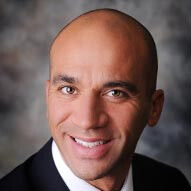Pediatric brain aneurysm
A brain aneurysm (an·eu·rysm) occurs when an area of an artery bulges or balloons due to a weakening of the artery wall. Aneurysms can be life threatening if they rupture and require immediate medical attention. Aneurysms are not common in children, but can happen, and they are not typically symptomatic unless they rupture. At Children's Health℠, The Center for Cerebrovascular Disorders in Children offers children and parents a collaborative group of experts that comprehensively diagnose and treat your child’s cerebrovascular disease, such as aneurysms.
What is a pediatric brain aneurysm?

A brain aneurysm can break or rupture, which can cause bleeding into the brain – known as a hemorrhagic stroke.
When an aneurysm ruptures, this frequently happens in the space between the brain and the thin tissues the cover the brain (subarachnoid hemorrhage).
In most cases, the brain aneurysm doesn’t rupture, creating health problems or causing symptoms. These aneurysms are usually diagnosed during an imaging scan or other test to check for another health condition.
The Center for Cerebrovascular Disorders in Children team is among the very best in the region at performing the most advanced procedures and therapies for the treatment of pediatric cerebrovascular disease. Each of our primary team members works solely in the pediatric setting with a clinical interest in disorders of the cerebrovascular system.
This program is the only one of its kind in Texas, and one of a handful across the nation. It offers a unique level of expertise in the management and treatment of patients with aneurysms specific to children and adolescents. We are the only program in Dallas to offer pediatric neurosurgery and neuro-radiology coverage 24 hours a day by specialized, dedicated pediatric providers.
What are the signs and symptoms of a pediatric brain aneurysm?
When a ruptured aneurysm is experienced, the main symptom to watch out for is a sudden, severe headache, oftentimes described as the “worst headache” ever experienced.
Other signs and symptoms of a ruptured aneurysm can include:
Blurry or double vision
Confusion
Drooping eyelid
Light sensitivity
Loss of consciousness
Stiff neck
How is a pediatric brain aneurysm diagnosed?
Quick diagnosis and treatment is important in the case of a ruptured aneurysm.
Tests commonly used in the diagnosis of aneurysms include:
Cerebral angiogram - This test is performed by an interventional radiologist who specializes in the care of children. This is extremely important as children have smaller blood vessels, limitations on dye administration, and specific radiation recommendations.
The cerebral angiogram is a minimally invasive procedure which uses a special contrast, or dye, to observe blood flow in the brain. During the procedure, the radiologist places a small IV or catheter in a blood vessel in the groin, which he or she then uses to reach the blood vessels that supply the brain. With the help of the special contrast or dye, an X-ray machine moves in different angles and takes pictures of the blood vessels. A team consisting of a radiologist, anesthesiologist, radiology technologists, and nurses will care for your child throughout the procedure.
Following the procedure, your child will have to lie flat for approximately four hours due to puncture of a large blood vessel in the groin, as this decreases the risk of bleeding. If needed, your child will receive medication to help him or her relax and rest during this time. This can be an outpatient procedure; however, if treatment is performed, such as coiling, your child will be admitted for observation by our team.
Computed tomography (CT) scan - This test uses X-rays to produce multiple images of the inside of the body. These three-dimensional pictures of the brain can show bleeding in the artery after the aneurysm has burst.
MRI with magnetic resonance angiography (MRA) - This procedure uses radiofrequency to create accurate two- and three-dimensional images of the arteries in the neck and brain.
How is a pediatric brain aneurysm treated?
The ultimate goal of treating an aneurysm is to prevent future bleeding while preserving the artery. Our team of experts, who specialize in treating children with aneurysms, includes a neurologist, neurosurgeon, and a neuroradiologist.
In most cases, aneurysms can be successfully treated. A child's prognosis depends on how much bleeding occurred and how function and consciousness was initially affected by the ruptured aneurysm.
Treatment options include:
Cerebral coiling - This procedure, performed by an interventional radiologist in conjunction with a cerebral angiogram, uses a catheter inserted through the groin area to pack tiny coils into the aneurysm to promote blood clotting and close off the aneurysm.
Neurosurgery or microsurgery - Surgical intervention for cerebrovascular disorders requires a highly specialized and meticulous approach. This approach requires a craniotomy, removal of a piece of the skull followed by its replacement and following which our neuro surgeon utilizes a microscope to better visualize the aneurysm and place small metal clips at the base of the aneurysm where it bulges from the artery.
This process clips or ties off the bulging section of the artery without tearing it and causing a stroke. This technique, known as microsurgical clipping, has an excellent success rate.
Pediatric brain aneurysm doctors and providers
 Brad Edward Weprin, MDPediatric Neurosurgeon
Brad Edward Weprin, MDPediatric Neurosurgeon Rafael De Oliveira Sillero, MDNeurosurgeon
Rafael De Oliveira Sillero, MDNeurosurgeon Amy Hogge, MDPediatric Anesthesiologist
Amy Hogge, MDPediatric Anesthesiologist Darryl Miles, MDCritical Care Specialist
Darryl Miles, MDCritical Care Specialist G. Pride, MDPediatric Neuroradiologist
G. Pride, MDPediatric Neuroradiologist Lakshmi Raman, MDCritical Care Specialist
Lakshmi Raman, MDCritical Care Specialist Dale Swift, MDPediatric Neurosurgeon
Dale Swift, MDPediatric Neurosurgeon